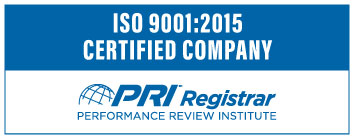Shop by Category
IO-Link - The New Form of Communication on the Sensor Level
IO-Link offers new options for communication between the system control and field level: Sensors and actuators become active process participants in an end-to-end automation network. As senders, they independently report errors and statuses to the control. As receivers, on the other hand, they receive signals – and process them. The result: cost and process optimization throughout the entire supply chain – across all industries.
WANT TO LEARN MORE?
SICK and Neff Power can help you design a system that meets your specific needs. Click the link below to request a visit from your Neff Power Sales Engineer to discuss IO-Link.
IO-Link - Principles and Technology
IO-Link is the world’s first standardized IO technology (IEC 61131-9) for communicating with sensors and actuators. The system components are an IO-Link master and an IO-Link device: a sensor, an actuator or a combination of both.
The IO-Link master is a component of an I/O assembly either in the control cabinet or directly in the field as a remote I/O with an IP 65/67 enclosure rating. The IO-Link device is coupled with the master using a standard sensor/actuator cable measuring up to 20 m in length. It produces and consumes signals (binary switching, analog input/output) that are transmitted directly via IO-Link in a digitized format.

Setting standards: IO-Link from SICK
- Serial, bidirectional point-to-point connection for signal transmission and power supply, no new bus system
- Backward-compatible with discrete standard PNP output sensors
- Operating modes: standard I/O mode (SIO), IO-Link mode
- Three transmission rates: 4,800 (COM 1), 38,400 (COM 2), 230,400 baud as an option (COM 3)
- Unshielded, standard 3-wire industrial cable for all connections
- M12 plug connector: 4-pin male connector for sensors, for example; 5-pin male connector for actuators, for example; 5-pin female connector for master
- Pin assignment: pin 1: 24 V, pin 3: 0 V, pin 4: switching and communication (C/Q)
- Maximum cable length: 20 m
- Maximum power consumption for power supply: 200 mA
- Process data (such as switching signals or distance values) is transmitted cyclically; service data (such as parameters) is transmitted acyclically
Integration into Automation Concepts
IO-Link sensors are integrated into the overall automation system with an IO-Link master. The device description (IODD) is used for the specific configuration; function blocks simplify programming.


IO-Link Master (Hardware)
Three PLC master-types are available for device connection:
EtherCAT IO-Link master, EtherNet/IP IO-Link master, PROFINET IO-Link master. The respective master is itself a fieldbus node itself or part of a modular I/O system connected to the fieldbus. Fieldbus nodes are integrated using a device description f(GSDML, EDS, ESI, etc.).

Configuration
During the design or configuration of the automation structure, the required fieldbus nodes are defined in the engineering tool provided by the PLC master manufacturer and the communication relationships are configured.
The IODD (IO Device Description) is used for specific configuration of IO-Link devices. It contains information on identification, device parameters, process and diagnostics data, communication properties, and more.

Programming
An IO-Link-device-specific function block is used to simplify programming. Function blocks simplify the acyclical communication between the PLC and IO-Link devices, service data communication and the interpretation of process data. They provide device parameters and correct device data types - and translate the provided parameters into indices and sub-indices.
Advantages of the Standard Functions
Easy Device Replacement
- Precise localization of the sensor within the machine and plant
- No specially trained personnel, no additional auxiliary aids or instructions necessary for reliable sensor exchange
- Automatic configuration prevents incorrect settings
- Replacement precisely documented
- Reduction in service work costs
- Minimized downtime periods
- Guaranteed machine availability
Flexible Sensor Adjustment
- Automatic configuration prevents incorrect settings
- Reduction in downtime periods when product changes take place
- More machine flexibility
- Increase in the variety of products a machine can handle
Condition monitoring/diagnostics
- Minimized risk of failure
- Optimization of maintenance and servicing periods
- Preparation of the service technician for maintenance by remote diagnosis
- Maintenance is done by trained personnel
- Detection and rectification of critical sensor states by service technicians before failure
- Enhanced maintenance contracts including process monitoring
- Optimized production times
- Sensor functions guaranteed
E-parts list/E-inventory
- Prevention of redundancies and additional expenses
- Increases transparency in the electronic documentation for the installed sensors
- Prevents time-consuming troubleshooting resulting from different documentation versions
- Ensures error-free, straightforward documentation of the state of the machine or plant when delivered
Visualization and configuration of the sensor
- Comprehensive diagnostics options for the sensor
- Configuration of the advanced function via the visualization software
- Verification and optimization of the quality values or operating reserves of a sensor signal
- Simplified selection of function range and performance of the sensor regarding the application solution
- Sensor configuration can be carried out easily from a desk
Digital transmission of analog measured values
- Economic cabling without shielding
- EMC-robust transmission with high accuracy
- Analog input cards no longer required
- Parallel transmission of measured values and digital signals
- Digital measured value is available in the PLC


